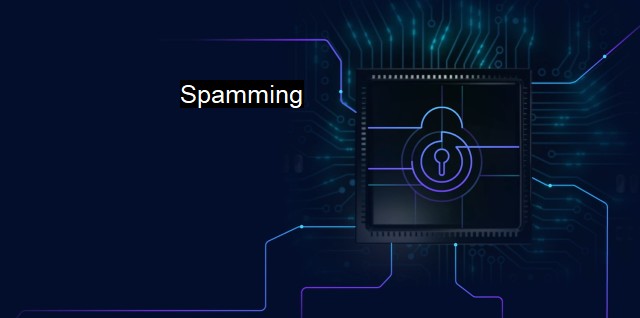What is Spamming?
Understanding Spamming: Risks, Techniques and Impact on Cybersecurity
Spamming, in the context of cybersecurity and antivirus software, refers to the digital distribution of unsolicited and typically irrelevant or inappropriate messages, often on a very large scale. Primally used in the field of electronic mail (email), it is also prevalent in various forms on social media, instant messaging applications, and mobile apps, which makes it crucial for users to understand its potential risks and ways to effectively mitigate them.Spamming is frequently used as a cyber hack on a massive scale. These messages often appear as commercial advertising, often for dubious products, get-rich-quick schemes, or quasi-legal services. Spammers generally attempt to gain unauthorized access to computers by disguising their true intent under the guise of advertisements or social media shares. These messages and campaigns determine the border of annoyance and potential peril.
Spam campaigns are widely used and are a problematic challenge as they are not easy to detect or prohibit. This is due to the anonymity inherent in the internet, which makes it quite difficult to trace the origin of a spam message.
Utilising bots, files generally dubbed 'botnets,' cybercriminals will have the ability to send hundreds of thousands, if not millions, of emails in a very short time frame. The contents of these messages can range from blatant scams and dodgy merchandise, to messages containing malware and phishing attempts designed to steal personal and financial information.
Spam messages may also contain harmful files called 'malware' which can harm your device or provide access to your systems for malicious operators. The leading solutions to handle spam mainly include cybersecurity measures like software, firewalls, and anti-spam filters.
Antivirus software plays a primary role in countering spam. It not only discovers and eliminates the spam emails out of email traffic but also removes the harmful elements these usually accompany. Antivirus detects and halts the malicious software or links entrenched in spam emails from doing harm to the user's data or device.
Modern spam-elimination tools use machine learning and heuristic algorithms to learn the user's behavior. Emails and messages received are run against a developed profile, and anything deviating from the norm is regarded as potential spam.
a comprehensive cybersecurity mechanism should ideally involve a mixture of manual and automated spam filtering processes. Leveraging antivirus and anti spam, moderation tools can regulate or block content that appears suspicious, including that emanating from known spam-sources.
While antivirus protects the machine, software, and files from the harm, anti-spam ensures a clean, user-friendly working environment, both personal or professional. Cybersecurity goes deeper and combines antivirus and anti-spam solutions with firewalls, virtual private networks (VPNs), and other security measures to provide a comprehensive defense system.
Users can also play a pivotal role in fighting spam by being more judicious about the information they share online. Not responding to suspicious emails, not clicking on ambiguous or unknown links, and frequent refreshing of passwords are good practices that further fortify spam combating mechanisms.
Spamming is not just a mere inconvenience; it's part of a larger, malicious intent by cybercriminals to exploit internet users. Thus, the significance of having robust antivirus frameworks in place, supplemented by smart personal browsing habits, cannot be overstated in the ongoing fight against spam.

Spamming FAQs
What is spamming in the context of cybersecurity?
Spamming in the context of cybersecurity refers to the act of sending unsolicited and unwanted messages or emails in bulk. These messages are often sent for commercial purposes, to spread malware or phishing attempts, and are often used to commit fraud or steal sensitive information.What are the potential dangers of spamming?
Spamming can lead to a number of potential dangers, including identity theft, financial loss, and damage to personal or corporate reputation. Spam emails may contain links to malicious websites, or attachments that contain viruses or malware that can steal sensitive data or take control of a device.How can I protect myself from spamming attacks?
To protect yourself from spamming attacks, the best approach is to be vigilant and cautious when opening or responding to unsolicited emails. You should also use spam filters or antivirus software that can help detect and block spam messages before they reach your inbox. It's also important to keep your software and operating systems up-to-date to prevent vulnerabilities that hackers can exploit.What can I do if I receive spam emails?
If you receive spam emails, you should always delete them and avoid responding or clicking on any links or attachments. You can also report spam emails to your email provider or IT department, who can take steps to block the sender and prevent future emails from that address. You can also mark spam emails as "junk" or "spam" to help train your email filters to block similar messages in the future.| | A | | | B | | | C | | | D | | | E | | | F | | | G | | | H | | | I | | | J | | | K | | | L | | | M | |
| | N | | | O | | | P | | | Q | | | R | | | S | | | T | | | U | | | V | | | W | | | X | | | Y | | | Z | |
| | 1 | | | 2 | | | 3 | | | 4 | | | 7 | | | 8 | | |||||||